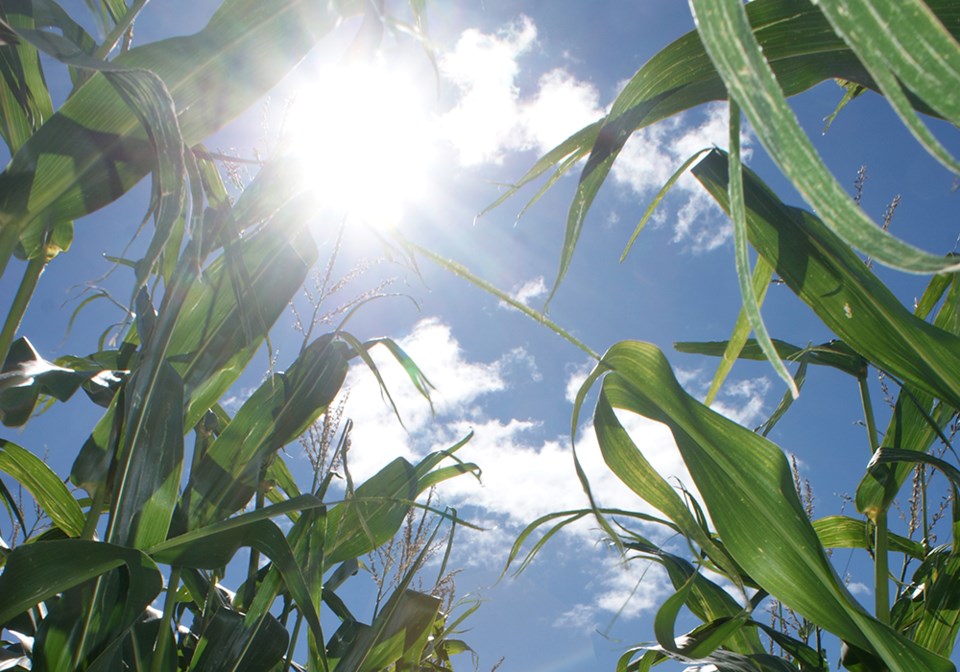WESTERN PRODUCER — Enhanced forage and corn rainfall programs, an expanded contract price option program and increased establishment benefits are all part of this year’s Saskatchewan crop insurance program.
Agriculture minister David Marit announced the 2022 program last week, saying coverage and premiums are up due to higher commodity prices but premium rates have dropped.
The average coverage is $405 per acre and the average total premium is $12.05. Those figures compare to $273 and $8.59 per acre last year.
Premium rates dropped because of the 2020 crop; the 2021 crop won’t be taken into account until next year.
Marit said the extreme heat and drought last year led to the introduction of a heat adjustment factor in the forage and corn rainfall programs.
Saskatchewan Crop Insurance Corp. acting chief executive officer Jeff Morrow said these programs will use a temperature of 31 C or higher to calculate moisture available to plants in a month.
“Let’s say for every day that our weather stations record a temperature of 31 C or higher we will subtract one millimetre of precipitation when we’re calculating the monthly total,” he explained. “So, for July, let’s say there were five days… then take five millimetres off the total. It’s really to acknowledge that when we’re experiencing that extreme heat all the moisture that falls is certainly not available for forage yield.”
Lorelei Hulston, vice-president of operations, said that temperature was selected because it would be valuable without causing premiums to increase too much.
Marit said participation in the weather-based programs has grown in the last few years. Last year, 3.15 million forage acres were insured compared to 2.33 million acres in 2020.
“Last year SCIC paid over $50 million in claims to producers, a record for the program with an average payment of $34,000,” he said.
Forage coverage has increased significantly for this year in response to current feed prices, Marit said, and producers should review the programs to make sure they are insuring at proper levels.
Under the contract price option, producers can blend contract prices and the crop insurance base price to get higher coverage. Previously, the option was available only for select crops but now includes all commercial crops, including fababeans, Khorasan wheat, fall and spring rye, sunflowers, triticale, winter wheat, extra strong wheat, hard white wheat, all classes of chickpeas, caraway, irrigated dry beans and soybeans.
Marit added many establishment prices have gone up this year, also because of increased commodity and seed prices.
Crop insurance base prices, from the federal government’s January forecasts, have gone up significantly for most crops.
For example, durum wheat went from $6.94 per bushel to $11.16, oats from $3.39 to $5.63 and canola from $12.02 to $17.01. Peas rose from $7.50 to $11.57 and large green lentils climbed from 29 cents to 36 cents. The full list is available at SCIC’s website.
Producers have until March 31 to apply for or make changes to existing policies.
Marit encouraged farmers to participate in AgriStability now that the reference margin limit has been removed.
“AgriStability is a low-cost business risk management program,” he said. “On average in Saskatchewan the cost to participate in AgriStability is 67 cents per acre or $1.16 per animal. The deadline to enrol in this program is April 30.
Livestock producers can participate in Livestock Price Insurance year-round for feeders and fed cattle. Calf policies opened earlier in February and are available to buy on Tuesday, Wednesday and Thursday until June 9.
Marit said producers should not rely on ad-hoc payments if 2022 is again a dry year. The drought response program under Agri-Recovery as of Jan. 31 had paid about $275 million on more than 20,000 applications.
The minister said he expects more producers may enrol in all programs in the wake of last year’s drought.
In 2021, the corporation paid about $2.4 billion in claims after one of the driest years in the last 20. Marit said about 30,000 claims were received compared to the five-year average of 7,800 post-harvest claims.
He reassured producers the crop insurance fund is strong.
“Since 2013, Saskatchewan crop insurance has purchased private re-insurance. Saskatchewan crop insurance believes reinsurance is an important risk mitigation tool which helps stabilize premium rates. Crop insurance continues to be a sound actuarial program with funding supplemented by provincial and federal dollars.”
Producer organizations listening to the announcement said this year’s changes are welcome.
“This government has heard what industry has asked for,” said Saskatchewan Stock Growers Association president Kelcy Elford. “It’s critical for these tools to be in place for agriculture to be successful in this province.”
Saskatchewan Cattlemen’s Association chair Arnold Balicki said the past year was difficult.
“I really encourage every cattle producer to talk to their SCIC rep about the options for their hay land, their grassland, and their cattle,” he said. “Last year, programs helped a lot of producers and I don’t want anyone missing out on something that can be very helpful if rain isn’t there for us this year, especially if we get into a real heat dome as we did last year.”
Ray Orb, president of the Saskatchewan Association of Rural Municipalities, encouraged farmers to enrol.
“We know what the livestock producers have gone through and it looks like we could have a dry year again,” he said.




